Season 9 - Episode 5
Tips & Tricks for All-Star Product Managers by Twilio Head of Product
In this week’s episode of the Product Podcast, Eva Feng, Twilio Head of Product, talks about how to become a star Product Manager. She touches on core PM skills, common PM pitfalls, and what your PM career path might look like.

A little about me. My name is Eva Feng. I’m the Head of Product for Twilio. Twilio is a cloud communication platform as a service company based in San Francisco, California. Twilio allows software developers to programmatically make and receive phone calls, send or receive text messages, and perform other communication functions using our web API services.
Even you haven’t heard about Twilio, or you don’t think you know Twilio, very likely you may have used our products or service before. Such as when your bank sends a verification code to you, your delivery confirmation, text messages or your appointment reminder phone calls. These might be all powered by Twilio.
Before joining Twilio, I held several leadership roles at Amazon Web Services, Service Now, Hewlett-Packard, and a number of startups. I’m a transplant to the US. I love living in the beautiful city of San Francisco now. I was born and raised in China, graduated from Nottingham Business School back in the UK. I worked in the UK, China and the US, and I also managed several global teams. When I introduce myself, people always joke, Wow, you’re very international.
Jokes aside, and today we’re going to talk about three main topics: 1) What are the core skills a star Product Manager should possess? 2) What are the common Product Manager pitfalls? 3) And what does a career path look like for a Product Manager?
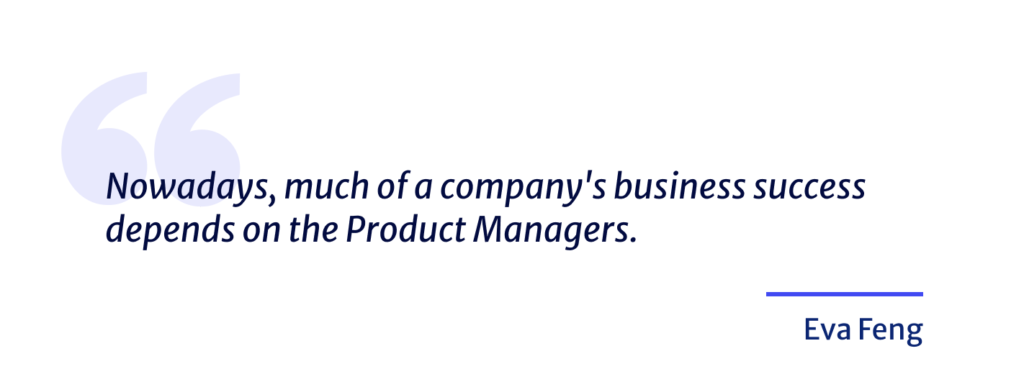
The reason I chose these three topics is because nowadays so much of a company’s business success depends on the Product Managers. Product Managers significantly guide investment of time and resources to deliver customer and business value for the company. Product Management also has many flavors and Product Managers may come from various backgrounds, such as engineering, marketing, operational, customer support, et cetera, but there are some commonalities I see.
I learned from some outstanding Product Managers and there are some common mistakes I’ve seen along my career. I’d like to share those with you and also talk about how can you grow your career as a Product Manager.
Each of the topics could be a talk in itself. I aggressively combine all three in one talk just to give you your overview. This could be a conversation starter. And if you have any questions you want to discuss further, please feel free to reach out. You can find me on LinkedIn.
Core skills. You might have heard of star Product Manager, 10 X Product Manager. What does it mean? It basically means like someone who is doing so much better, like 10 times better at their job than their peers. What do they look like and what makes them stand out in a crowd? Take a look at their core skills.
The first core skill they have is they take ownership. They take ownership of their product. Everything related to their product is their responsibility. They never say, “that’s not my job.” They think long-term. They don’t sacrifice long-term value for short-term results. Great Product Managers live to address their customer’s problems and rarely satisfy them until the customers express delight in their solution. Don’t focus on the MVP, Minimal Viable Product. Focus on the MLP, Minimal Lovable Product, first and start from there.
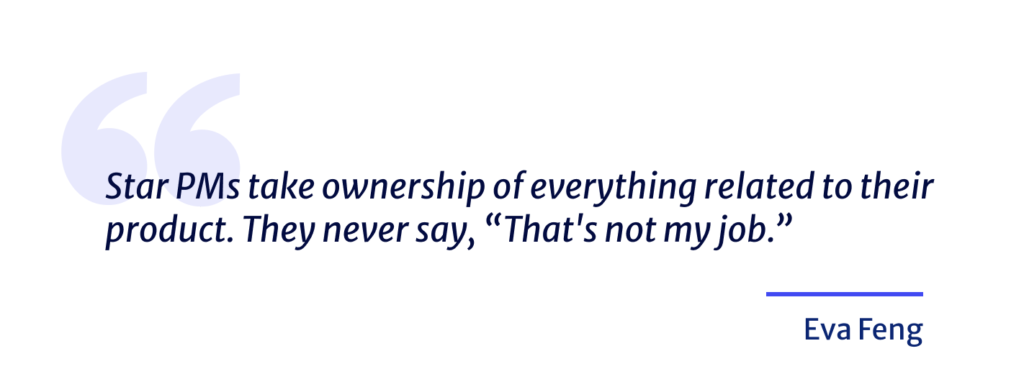
In practice: When you are trying to launch a product, if there are any dependencies on the other teams, if it is the PM job to align the role roadmap with stakeholders, if there are any challenges, it’s the PM job to solve the problems. The PM should not just sit there and wait and let the whole team stop there because the ball is on the other team’s court. Set up to lead as needed, roll up your sleeves to help your team drive and deliver. Don’t limit yourself to do only the work listed in your job description.
To be honest, Product Manager is a role that doesn’t have a script you can follow. If there’s anything that needs to get done, you need to find a way to get it done. And if there’s a vacuum, you will need to fill it.
The second skill I see from lead star Product Managers is they know their customers deeply. They know what the customers care about. I like the customer obsession leadership principle from Amazon because I think it describes, What does your customer mean? The leadership principle sounds like this: leaders start with customer and work backward. They work vigorously to earn and keep customers. Although leaders pay attention to competitors, they obsess over customers. So star Product Managers understand the customers and solve problems from their perspective, and earn trust through every single interaction.

Let me give you an example. I learned this example from a legendary Product Manager at AWS. So this is the scenario. I tell you, let’s build a product for bikers. Our customers are bikers. All right. I’m sure there are some images that pop up in your head. Like what do the customers look like? OK. So what types of bikers are you thinking now? Is it like Mr. Armstrong type of bikers or is heels and engines type of biker?
I’m sure we have a different preference here already, or a different understanding of the customers. So if we don’t understand our customers well, categorize them. If we’re trying to build a product that makes everybody happy, we’ll build a product like this: a moped. This moped has everything! It has wheels, handlebars, mirrors. It can even go fast maybe, but will any of our customers be happy? I don’t think so.
Read next: Characteristics of Exceptional Product Managers
“Know your customers deeply” means, as a PM, you know what they care about. Segment customers based on use case, put numbers behind each segment, ask questions such as, What do customers do today? What is the status quo today? What’s wrong with this status quo and what are the pain points our customers are facing? What are the pain points financially important to our customers?
In practice, the star Product Managers communicate the customer problems clearly to the engineering team. They define the core value proposition in one sentence, like why do you expect the customer to buy or use your product or service? Internalize the technical details of the solution. Then present it to the customers.
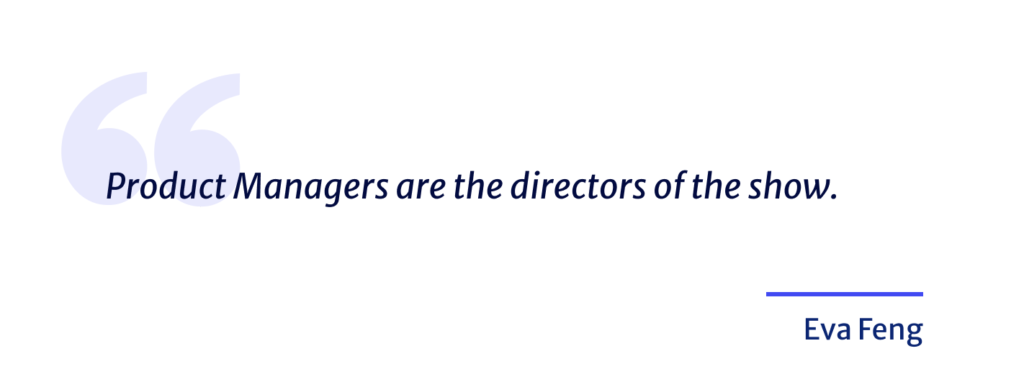
Product Managers are the directors of the show. Star Product Managers go beyond just working with engineering and design teams. They conduct everything going on in all aspects of the product lifecycle. From R&D, building a product with the developer and engineering and design team, to working with the marketing sales team, taking the product to market.
They also enable the customer success team, customer support team, and operational team, to fully equip them so they can support the product and then collect the feedback from the field, from all the stakeholders, and from the customer. So you can evaluate your product. And there’s also managing the financial and legal part. Everything is your responsibility and the Product Manager is the center and director of the show.
Martin Ericksson, the co-founder and curator of Mind the Product blog, proposed a simple but powerful diagram. He said there are three elements: the user experience, the technology, and the business. The Product Manager sits in the middle.
His quote is,
““A good Product Manager must be experiencing at least one, passionate about all three and in conversation with the practitioners in all.” ”
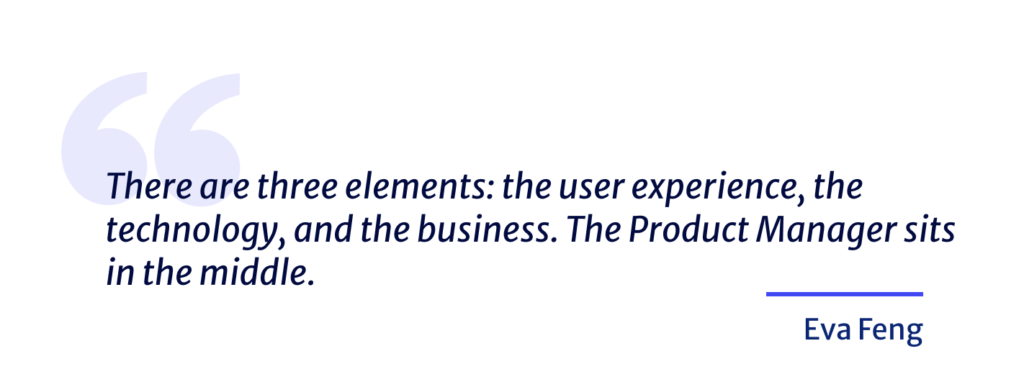
On the business side, Product Managers should focus on creating value for customers and ultimately for the company also by connecting business objectives to product outcomes.
On the user experience side, the Product Manager should develop empathy to get to know the customers, understand how they operate, how they run their business, and what the pain points are. And on the technology side, Product Managers go up with an understanding of the technology platform and how the engineering team works. What are the limitations? What can you work with?
Make sure you are available to your development team, to clarify questions and discuss priorities, collaborate on solutions and solution options, and make tradeoffs. As the director of the show, Product Managers need to think holistically, and also dive deep in each area with the practitioners.
The next core skill: strategic thinking. A star Product Manager is a strategic thinker. They have the ability to look up and look down, meaning they can build the product vision and are also strong in execution, and they can get things done.
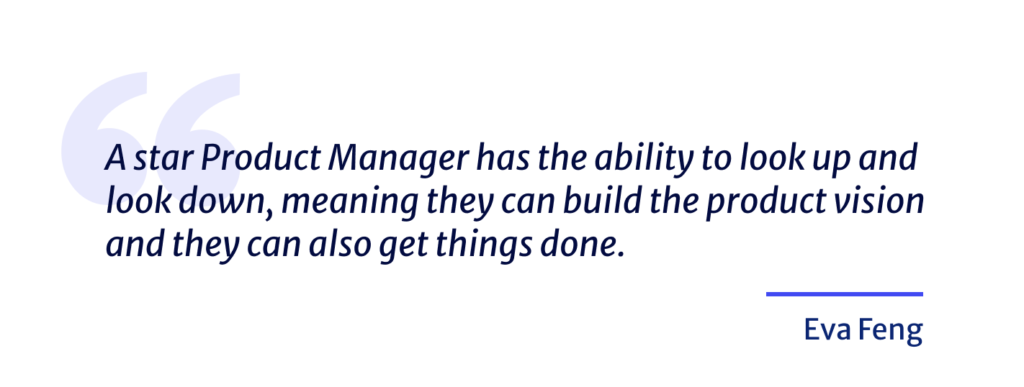
As Product People, I think we all know what our day is like. It’s very busy. A lot of people come to you and ask for a lot of things. When you are heads down addressing issues and dealing with day-to-day demands, it’s easy to make light strategy. A star Product Manager is able to invest the time in exploring and planning for the future.
Also strong on the execution. They can switch time between execution and strategy, which requires discipline because there will almost always be something that is urgent, demanding your time. Act strategically, prioritize the most important thing for the business, and deprioritize things that can safely wait. Star Product Managers take away that risk.
In practice, acting strategically includes understanding customers, understanding the market, thinking about your overall vision and the progress you are making towards your goals, digging into investing data or industry trends, updating your roadmap, and evangelizing the product within your company.
You need to ruthlessly prioritize. Stack rank all of your goals and tasks and build a timeframe for each of the goals.
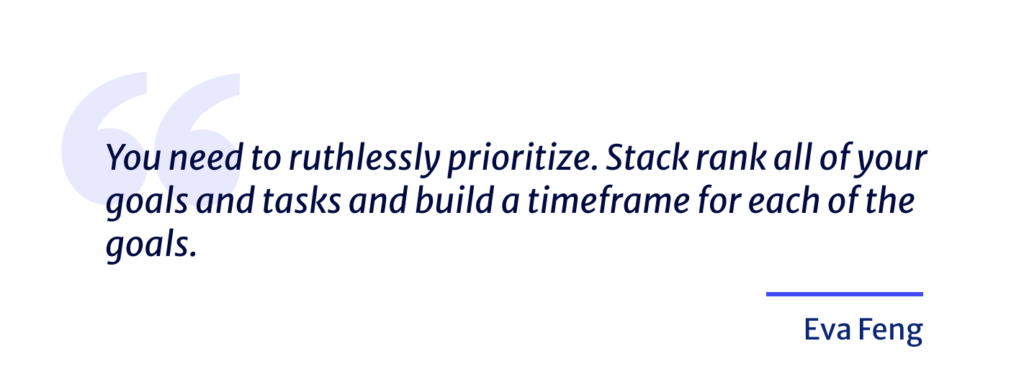
The last skill I see very commonly in strong Product Managers is they drive culture and leadership. Product Manager is a leadership role. Product Managers bring people together and they need to lead a team or work towards the same goal. However, Product Manager is also a role leading without title or power.
Star Product Managers influence the teams and stakeholders and contribute to the team culture in a positive way. Their influence goes beyond just aligning stakeholders and the team behind a common purpose. It’s winning their hearts and minds and establishing a shared set of beliefs and the passion to solve the customer problems together. PMs can influence the team and company culture. Start from how you approach the role, how you establish the collaborative relationship with stakeholders, and how to make prioritizations and stakeholders with you.
Check out: How to Be a Better Product Leader in 2022
Now that we’ve gone through some core skills, let’s take a look at common pitfalls. The first one is short-term versus long-term. The Product Manager’s job is to clearly and precisely describe what is the most important problem or opportunity, and lead the team to build a solution to meet the needs of the customer.
However, I sometimes see Product Managers get bogged down by either the legacy system, the technical challenges they’re facing, team capacity, or resource constraints. They sometimes settle for less. They settle for just okay solutions. They’re trying to patch the current solution as much as they can, or trying to find a work-around instead of building the right solution.
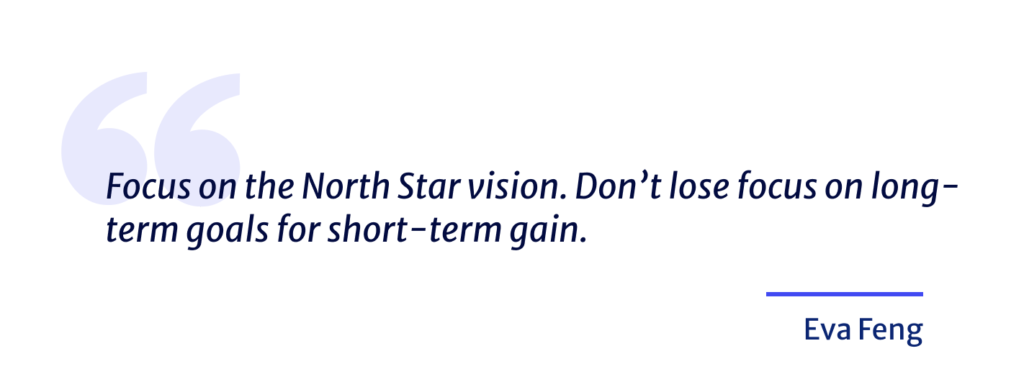
I would suggest Product Managers focus on the North Star vision, really focusing on solving the problems our customers are facing to drive the long-term goals. Don’t lose focus on long-term goals for short-term gain.
The second common pitfall is how to use data. As a PM, if you work for a well-established company or have a fairly mature team or mature product, there might be lots of data. You’ll have the luxury to leverage several analytics tools, navigate several dashboards, swim in an ocean of data. You may get lost in data. Some PMs may have the opposite problem. They’re struggling with a lack of data because it’s a new product, a new team, or they don’t have the tools set up yet.
The key thing here is the PM should be able to bring the data to bear where needed and synthesize what it means for the business. Just to throwing some data there doesn’t really help you get your point across. In practice, PMs should start with data and ask the right questions. And data could be qualitative data or quantitative data. The quantitative data such as numbers, stats, dashboards, and qualitative data could be customer anecdotes, customer interviews, technical experiments. Use the data to answer questions such as “Why is it important?” And they start to help you understand the primary drivers causing something.
Another common pitfall is that some PMs are pretty diplomatic. They will say “Oh, it depends.” PMs need to be able to frame the important decisions facing the business into a programmatic choice or plan of action. A PM’s job is not to say “It depends.”
PMs should list the options, the pros and cons for each option, use data to make a clear recommendation, and also evaluate the alternatives… What are the things we’re not considering? What what are the solutions we explored and decided not to pursue? PMs need to look around the corner and plan a few moves ahead. Like, What are the challenges we can foresee? What are the calculated risks we’re taking if we go down this path?
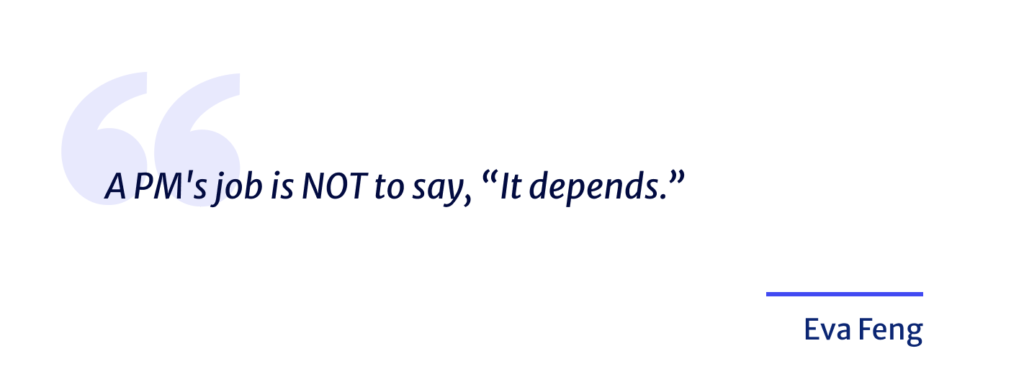
In the last part of my talk, I want to talk about the career path. Before we dive in, I wanted to share this quote from Steve Jobs at a Stanford commencement. He said,
““You can’t connect the dots looking forward: you can only connect them looking backward. So you have to trust the dots will somehow connect in your future.””
Why do I want to share this? Because I think it’s a good description of how I connected dots throughout my career. Let me share my career path with you. When I graduated from Nottingham Business School, I became a software engineer. I know you must be thinking, why would an MBA graduate want to become a software engineer? You’re right. I didn’t want to become an engineer.
Even though I have a Master’s degree in computer science also, and I can code, coding was not my passion. Coding is still not my passion today. I code sometimes to round-about and get some events tickets, but that’s all I do about coding.
Back then I applied for a role in the business development team at HP. But the hiring manager told me you don’t have BD experience and you don’t know the engineer. You don’t know the enterprise service world. I think you should start from the software engineer or solution engineer position, learn to build the product, and learn about the industry.
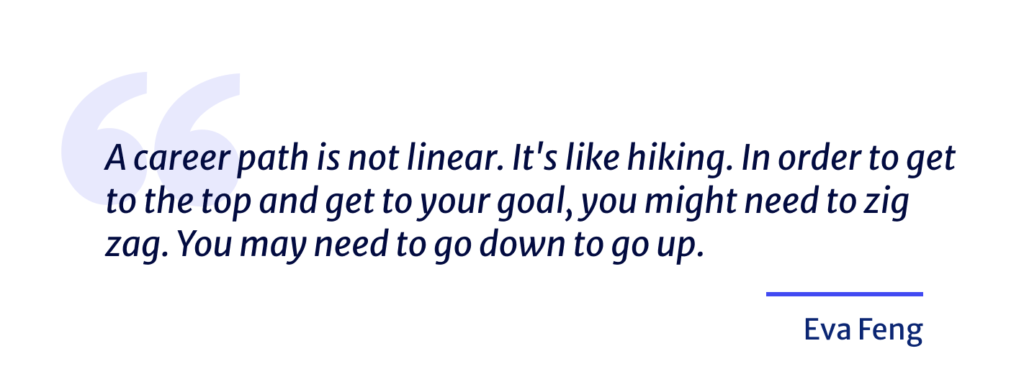
I took his suggestion. It turns out it was a great idea. The knowledge I gained as an engineer made me a successful BD person later on, since I knew the product so well, I could build and sell the solution to the customers based underneath.
After I worked as a BD person for a while, I realized I had lots of knowledge. I wanted to use that knowledge about my customers, their needs and wants, to build our products better. So I started the path as a Product Person. All the job titles listed here, other jobs I held before, looking back is my way to connect the dots.
And these jobs help me a lot in my PM role since I know how to go to market works. I know how software development works. I know how support and customer success works. I have done PNL et cetera, et cetera.
My point here is, a career path is not linear. It’s like hiking. In order to get to the top and get to your goal, you might need to zig zag. You may need to go down to go up. It might also take some time for you to prove yourself at a certain position before you can move on to the next level. Especially the Product Managers, you have to be T-shaped and have the breadth of the knowledge of the whole product life cycle. And also you have to go deep in certain areas. We need to demonstrate a track record of repeated success in shipping quality products first.
Once you get into the PM position, what’s the career path look like. Ken Sandy did a really good job illustrating the PM career path in this diagram. You can map your development as a Product Manager against the two dimensions: 1) the breadth of product and ownership, and also 2) the scope of responsibility.
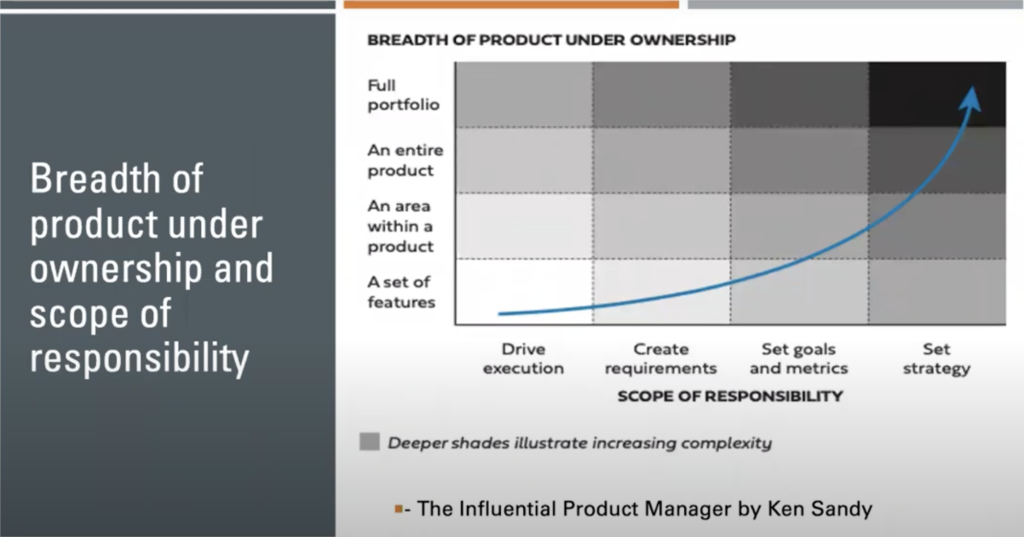
As a Junior Product Manager, you will generally be given a small product of the product to own, such as a few product features, a few functions. As you grow, you will assume ownership of your responsibilities of a bigger product or a whole product. And then when you get to the senior level, as a product leader, perhaps a team of Product Managers will report to you and you will manage a portfolio of a product.
From the responsibility perspective, you may start from driving execution first, and then getting to creative requirements, and then setting goals and success metrics for your products, and then setting a strategy for the products or even for a product portfolio.
There are also many different types of Product Managers, such as a Technical Product Manager versus non-technical Product Managers, inbound Product Managers versus outbound Product Managers, PM for consumer products and PM for enterprise products. Besides the core PM skills, each of these roles requires a different set of skills also.
I like Steve Jobs so I’d like to end my talk with a quote from his from the same commencement. He said, “You got to find what you love.” As a Product Manager, I hope you’ll find a good area of focus that you’re passionate about.
Listen to our episodes on your favorite platform
Stay tuned for new episodes
By sharing your email, you agree to our Privacy Policy and Terms of Service






